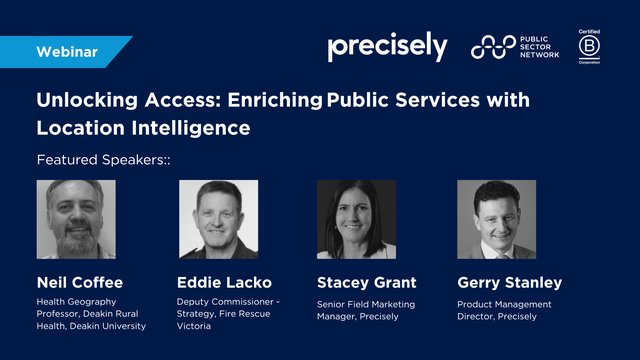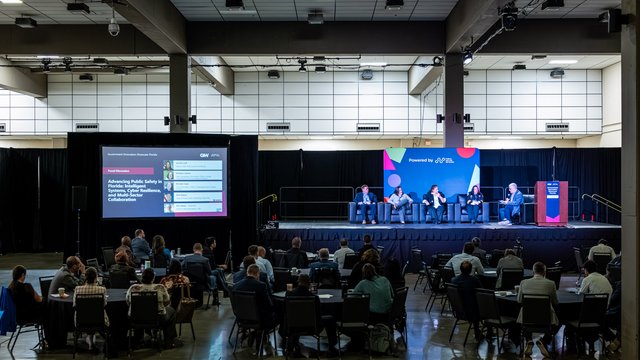Creating and Executing Your Multi-Channel Engagement strategy

Catherine Payne
Executive Director, Digital & Customer Communications
Department of Environment, Land, Water & Planning (Vic)
Clarity from a crisis
Engagement can take many forms. At the Victorian Department of Environment, Land, Water & Planning (DELWP), it was clear prior to 2015 that their engagement strategies weren’t working as intended, but it was equally difficult to change things. Processes within government departments often continue as they always have until there is a crisis or some other extenuating external factor. Catherine Payne , the Executive Director of Digital & Customer Communications at the department, says that things came to a head “in 2015 when we got incredible clarity out of a crisis.” Crises often lead to opportunities and this is exactly what happened when “a planned burn had a negative impact on a community because a fire got out of control.” Immediately there was outrage in the community. “They were very upset with us.”
The Secretary of the department put out a heartfelt statement and the department worked to address all the issues that the fire caused. More than that though, “from that incident came a real understanding of the need for empathy and for owning the issue.” It was also such a “profound experience” that it became the catalyst they needed “to change the way we think as an organisation.” From the response to that incident, they realised that DELWP needed to have three principles to live by: “be available; speak and listen; take action.” From these three principles came three engagement values that “now inform our approach and our commitment, and run through our culture and our community charter.” They are “clarity, confidence and cut through,” and they are now “at the centre of everything we do.” The three values now form the bedrock of DELWP’s engagement strategy.
A new approach
Clarity: a holistic approach to engagement
The three values came about as a result of an incident in a regional community, and thus better engagement with the regions was of paramount importance. “We have a large workforce in regional Victoria who live in the communities, and we get a lot of feedback from them about how well we’re doing.” The department therefore needs to be clear about what it is doing and how it affects people. They started with a simple “new framework designed to engage with the community in different ways:”
- Staff – “It became evident through the crisis that our staff felt very strongly that the organisation needs to do things differently, and to be aligned.” This is about trust.
- Community – The community “wanted more from us. They were not satisfied with our preparation or engagement and wanted us to do better.” This is about reputation.
- Metrics – “We have to do better at measuring, learning and improving our practice.” This is about transparency.
These three factors led to a new multi-channel engagement platform “to build our capability.” DELWP started working with Engage Victoria and the whole of the Victorian public sector “to build an engagement platform.” They created a customer satisfaction framework as well as “Engage@DELWP, which articulates clearly for our staff the expectations we have of them and they have of us, and gives them a clear understanding of engagement.” The department also conducted a lot of training for staff to “equip them to engage with community, with customers and with clients.”
Confidence: stakeholder feedback
Confidence is linked to reputation and thus in 2016, DELWP “started a biannual process of measuring our reputation.” This was conducted through a survey with high impact stakeholders asking them “about 11 attributes of reputation, that cover things like services, leadership, integrity, workplace and innovation.” The initial responses were “very honest and candid,” with an overall score in the 70% approval range. Since then, the biannual survey has seen “a 12 percentage point improvement.” This shows that the department is tracking in the right direction, and it is also likely that other forms of engagement (as mentioned above) have worked to improve confidence and reputation. At the same time, “while we’ve made some improvements, we’ve still got a way to go.” The next survey will include the impacts of COVID-19 as well as recent bushfires and floods, so “it will be interesting to see how we perform in terms of engagement.”
“Data is really important in terms of informing our thinking about what we’re doing. In terms of confidence, if we think of trust and reputation as our North Star, we are absolutely and totally going to be effective because of the kind of clarity and focus that we now have. That gives us confidence in terms of the way that we think and work in the engagement space.”
Cut through: authentic storytelling
The departmental crisis of a few years ago showed everyone that being authentic was critical. It was only because the department was authentic in how they responded that the affected communities continued to engage with the department. As such, when there were bigger crises like bushfires and a global pandemic, being authentic was of even greater importance, and that was the only way that the department could get any cut through in a crowded landscape. Both the bushfires and COVID “changed the way we engage.” It wasn’t just about more engagement; it was about “engagement in many different ways.” For instance, the engagement was in multiple languages – which required the acquisition of specific skills – and was “at speed.” DELWP also worked closely with other departments in ways that they never had before, “and we had to adapt. The customer facing channel was really important. When people are under stress, they want to talk to a real human being.” Social media was also engaged as a tool “of communicating authentically, quickly and simply with lot of information being more targeted.” DELWP also consolidated some of their websites and web chats, and through the pandemic, directed much of their web traffic to the government’s official COVID-19 website.
As part of their engagement, storytelling became crucial. It was something that audiences related to and thus drove up engagement and cut through. For instance, when Mallacoota was evacuated during the 2019-20 bushfires, one of the firefighters wrote a poem about his experience “and put it on the regional Facebook page. It went gangbusters because it really spoke from the heart.” That led to an opportunity to tell more stories, which included videos. “It was incredible, probably the best engagement we’ve ever had.” DELWP also held a nature festival online in 2020 and a hybrid version in 2021 to engage in different ways, and both were very successful because they were done “in ways we never thought possible.”
"To have good engagement, we really had to work out how to leverage our assets effectively and relate them to our audiences. We had to have clarity around what are delivering, confidence that comes with knowing how to measure and understand what our reputation and trust elements are, and through feedback and the use of authentic storytelling, we got effective cut through. This is what engages best."
3



































